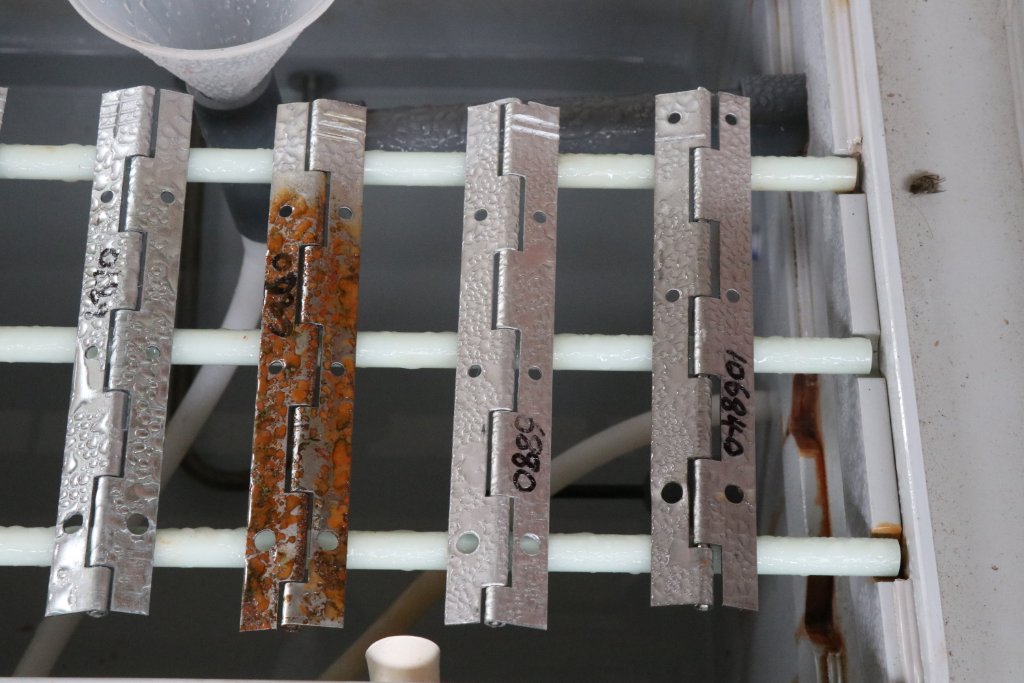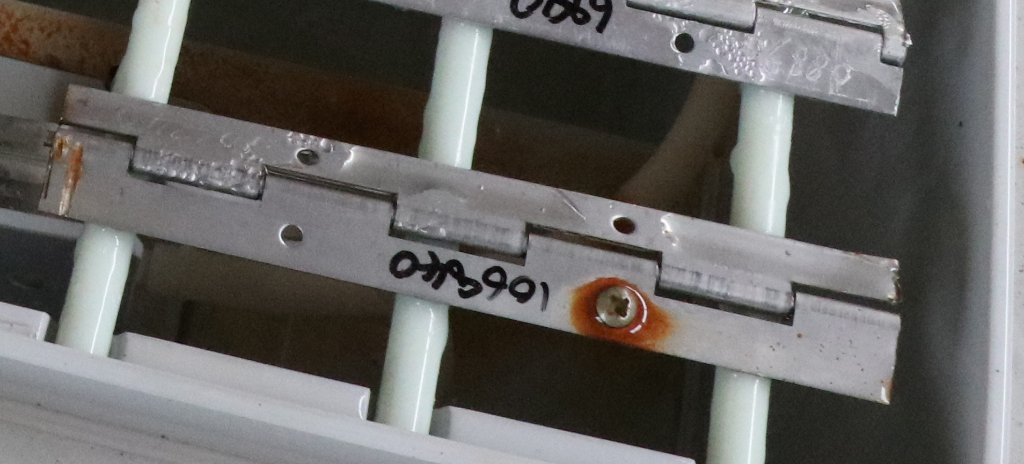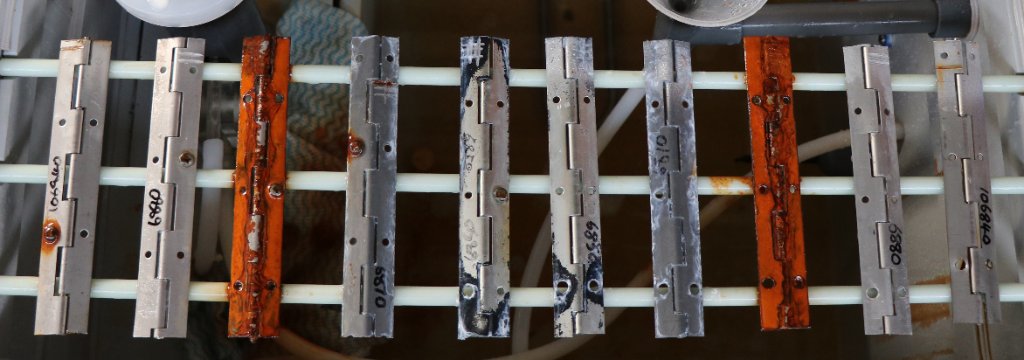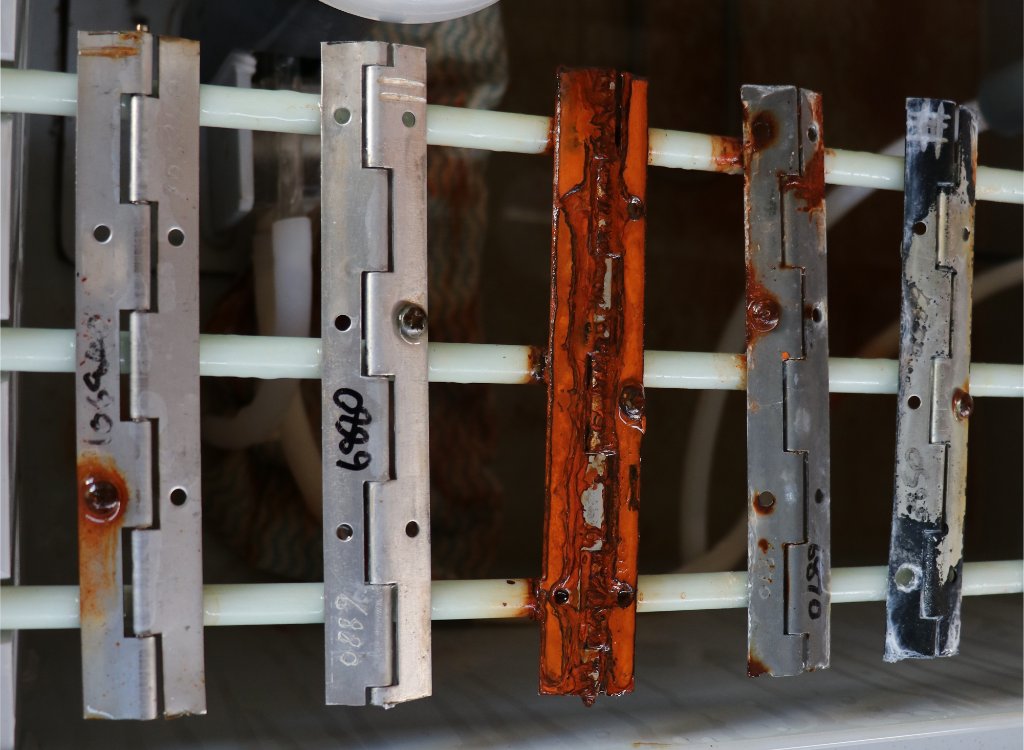Blog
Salt Spray Testing for Corrosion Resistance
What is Salt Spray Testing?
Salt spray testing is an accelerated corrosion test used to test the corrosion (rust) resistance of different metals. It does this by exposing components to a constant fog or spray of humid salt water. This harsh environment of salt and heat causes accelerated corrosion to occur. This is why we use a salt spray machine for internal product quality control and testing.
Why is it used?
There are so many real-world variables that can affect corrosion, because of this it is hard to do a reliable test on different metals. By testing in the most extreme environment possible, we can expect the components to last much longer in the real world.
Why does metal rust faster in salt water?
The main way that metal rusts is from a process called electromechanical corrosion. This reaction speeds up in salt water because electrical current flows more easily here than it does in fresh water. According to sciencing.com:
“Saltwater corrodes metal five times faster than fresh water does and the salty, humid ocean air causes metal to corrode 10 times faster than air with normal humidity.”The metals and coating we are currently testing are:
- 304 Stainless Steel
- Aluminium
- Plain Steel
- Galvanised Steel
- Zinc Plated Steel

For the first 5 hinges (left to middle) the bottom end is drop saw cut and left untreated. The top end is grinder cut untreated. From left to right we have:
- 304 SS Hinge with a 316 SS Pin
- Aluminium Hinge with 304 SS Pin
- Plain Steel Hinge and Pin
- Galvanised Hinge with 304 SS Pin
- Zinc Plated Hinge with Plain Steel Pin
For the second group of 5 hinges (middle to right) the bottom has been left as the original end. The top end is grinder cut with zinc spray. From middle to right we have:
- Zinc Plated Hinge with Plain Steel Pin
- Galvanised Hinge with 304 SS Pin
- Plain Steel Hinge and Pin
- Aluminium Hinge with 304 SS Pin
- 304 SS Hinge with a 316 SS Pin
What we have found after 200 hours of testing.
1 Hour into the salt spray test the plain steel hinge was already rusting

7 Hours In: The area around the zinc screw in the stainless steel hinge has started to rust. This is called galvanic corrosion, which happens when two dissimilar metals are in contact with each other in a corrosive environment. Because of this we recommend fixing your stainless steel piano hinges using stainless steel fasteners.

You will notice on the left of the picture the rusting around the two grinder cuts. This happens because steel shavings in the grinder disc from previous use have become embedded in the surface of the stainless steel. Because of this we recommend cutting stainless steel using a new disc, or have a disc specifically for stainless steel to avoid any cross contamination.
50 Hours In:
At 50 hours the plain steel hinges are completely rusted over. The galvanised hinge next to it has held up fine. While it has discoloured to a dark grey finish, the only rusting that is showing is around the grinder cut on top and the zinc plated screw attached.
The zinc plated hinges (middle) are showing no rust, with some discolouration at the ends and around the fixing holes.
125 Hours In:
At 125 Hours the stainless steel hinge and aluminium hinge (Left 1 and 2) are showing no further signs of rust. The galvanised hinge (second from right) has developed more rust across it, while the zinc plated hinge (right) is only showing a small amount of rust around the screw.
200 Hours In:At the end of our salt spray test this is what the hinges look like.

The hinges already rusting have continued to do so. Overall the zinc plated hinges have performed extremely well, showing only discolouration and small rusting around the screw, which does not affect the function of the hinge. The galvanised hinge can still open and shut, but is showing more signs of rust than the zinc plated hinge.
As you can see from the picture the aluminium and stainless steel hinges are still in very good condition. The stainless steel hinge has only been effected by the zinc fastener and grinder cut.
Co-Mac, For Hard to Find Hardware
Latest Blogs
How to Build Security Sliding Doors for a Outdoor Sports Court? Outdoor Security Sliding Door Project Review. 5931 Beam Clamp Load Testing - Vertical Pull Test | Co-Mac Types of Gate Rollers for U Track: Which One is Right for You? Choosing the Right Hinge for Your Chiller: Rising vs. Non-Rising Hinges Understanding Different Shapes of Seals: A Comprehensive Guide Accelerated Salt Spray Testing of Rust Protection Zinc Paints Top 3 Lock Options for Sliding Doors and Gates Container Door Hardware: A Guide to Container Hinges, Locks and Seals Top Tips for Choosing Durable Sliding Door Hardware in New Zealand's Climate: Your Ultimate Guide Self Closing Gate Hardware In the Community: Picking Daffodils 3 Types of Drop T Latches 2022 Catalogue Coming Soon! How long will Linear Slides last? We tested them past 80,000 cycles - find out how they performed How Long Will a Gas Strut Last? Engineering Forces Explained: Tensile, Compressive, Shear and Torsion Co-Mac Boredom Busters - How We Did It Co-Mac Boredom Busters Is a Double Nut Better than a Single Nut? How much Better?











